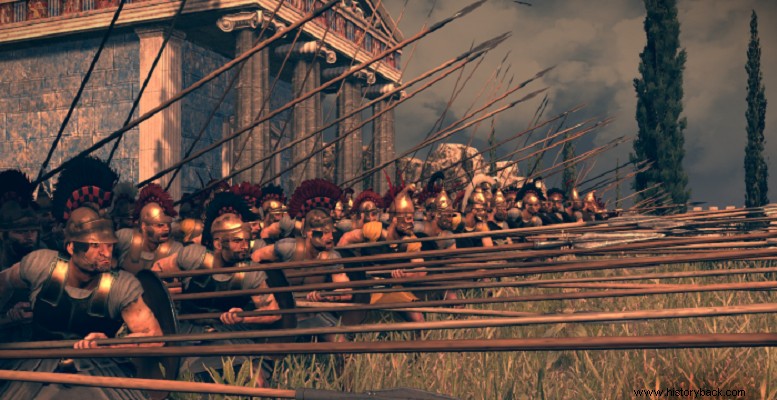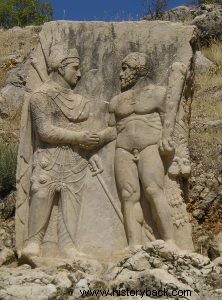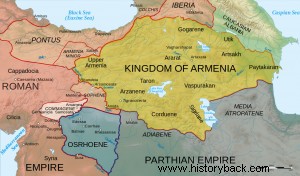
The kingdom of Commagene, on the borders of present-day Turkey and Syria, was another province that was separated from the Seleucid state, around 163-162 BC. The satrap of the region, Ptolemy, taking advantage of the weakness of the Seleucids, founded his own state.
Mithridates I's successor Kallinikos married the Greek Seleucid princess Laodice. They were succeeded by their son Antiochus I of Commagene who was an ally of the Romans against Mithridates of Pontus. In 38 BC he was succeeded by his son Mithridates II and him by Mithridates III. He was followed by Antiochus III, after whose death, in 17 AD. the Romans conquered the kingdom.
In 38 AD however, Caligula ordered the re-creation of the kingdom, whose king was assumed by Antiochus D. The kingdom remained free until 72 AD. before being reintegrated into the Roman Empire after a no-win battle against the Romans. At the head of this battle against the VI Ferrata Legion were the two sons of Antiochus D, Epiphanes and Kallinikos.
The army of the kingdom
The army of the Commagene kingdom was a miniature of the Seleucid army, with strong local admixtures. The infantry had units of Greek sarissaphoros, threophoros and Thracian peltasts. Its bulk, however, consisted of native Syrian archers.
The sarissifori were organized in Regiments and Classes according to the Macedonian model, something that probably also applied to the regular divisions of gatekeepers. The local archers were a kind of militia. The sarissaphoros carried the standard armament – equipment, sarissa, sword, 60 cm diameter shield, helmet and breastplate. The charioteers carried a large shield-type shield, a helmet, a sword, a long spear and javelins. Some also wore a chain breastplate and were called thorakites.
The Thracians brought similar armament. It is not known whether there were also Thracian divisions armed with machetes and long spears. In addition to the compound bow, the Syrian archers also carried a sword, or manual. They did not carry helmets or shields.
The cavalry also had divisions of heavily barred cavalry, on Seleucid and Parthian standards, and large numbers of Syrian light horse archers. The barricades were armored from head to toe, and so were their horses. They were armed with long spears 3.5 m long (xyston) and swords . They fought in close order, the men's knees touching. They formed a moving metal wall capable of crushing anything in their path.
But there were also Greek light horsemen of the "Tarantine" type (unarmored light horsemen carrying shield, sword and javelins) as well as a few Gallic mercenaries. The Syrian light horsemen carried bow and sword, flail or manual.
The army of Commagene contributed catalytically to the victory of the Romans during the first Jewish Revolution. King Antiochus IV fought himself at the head of his phalanx of sarissaphoros and his dismounted parapets.

Antiochus I of Commagene with Herakles in relief.

